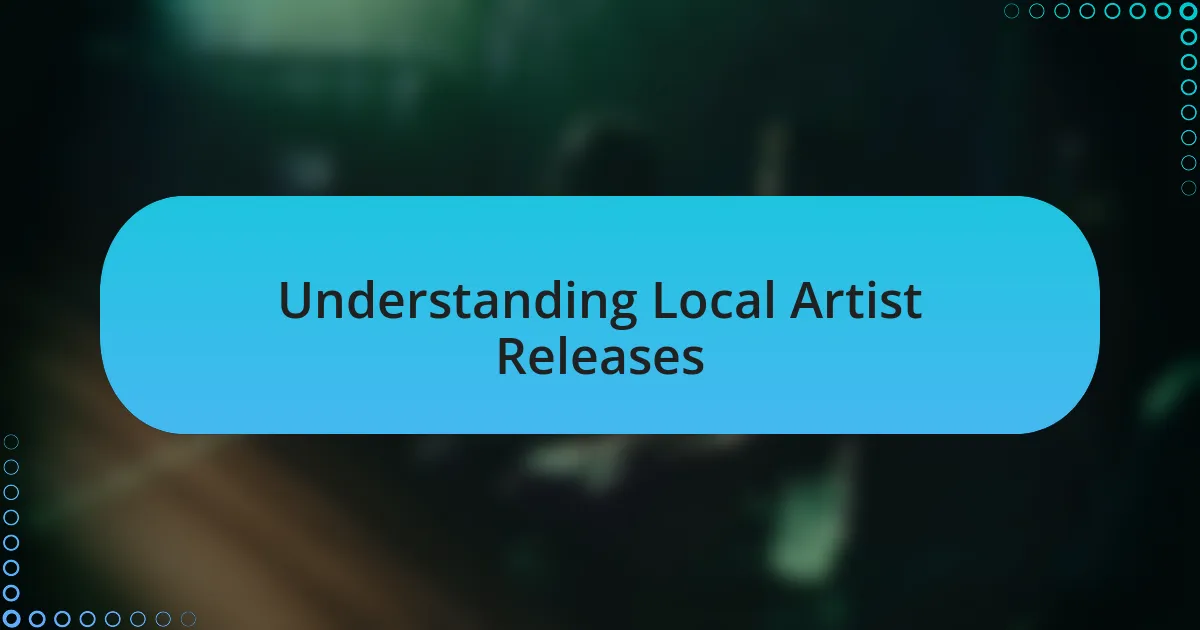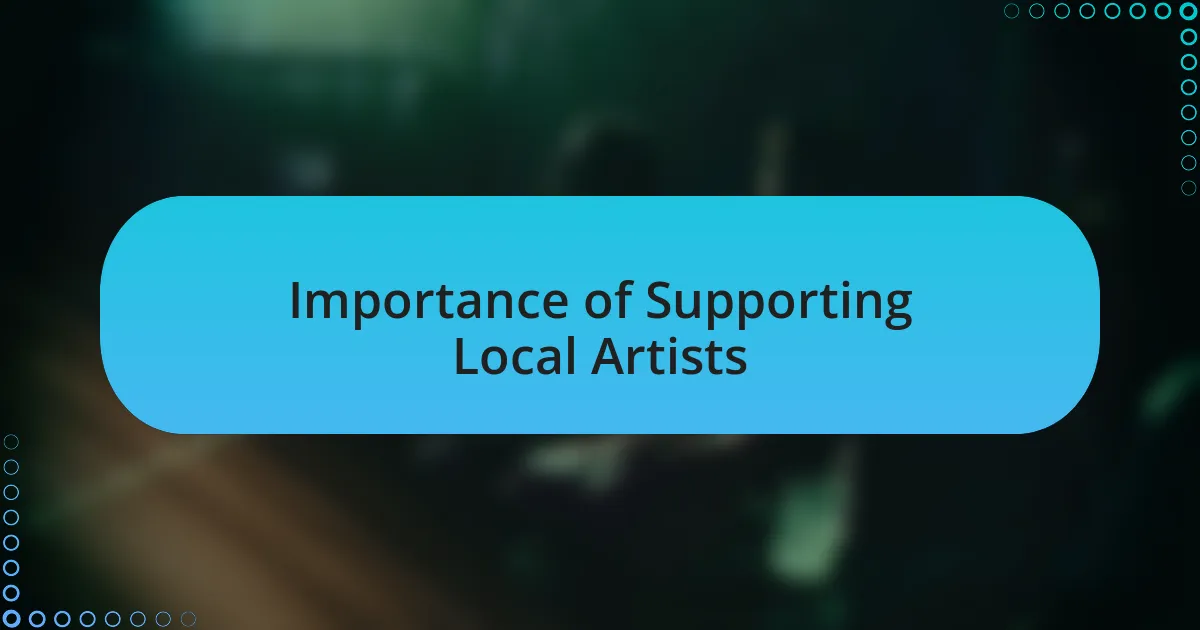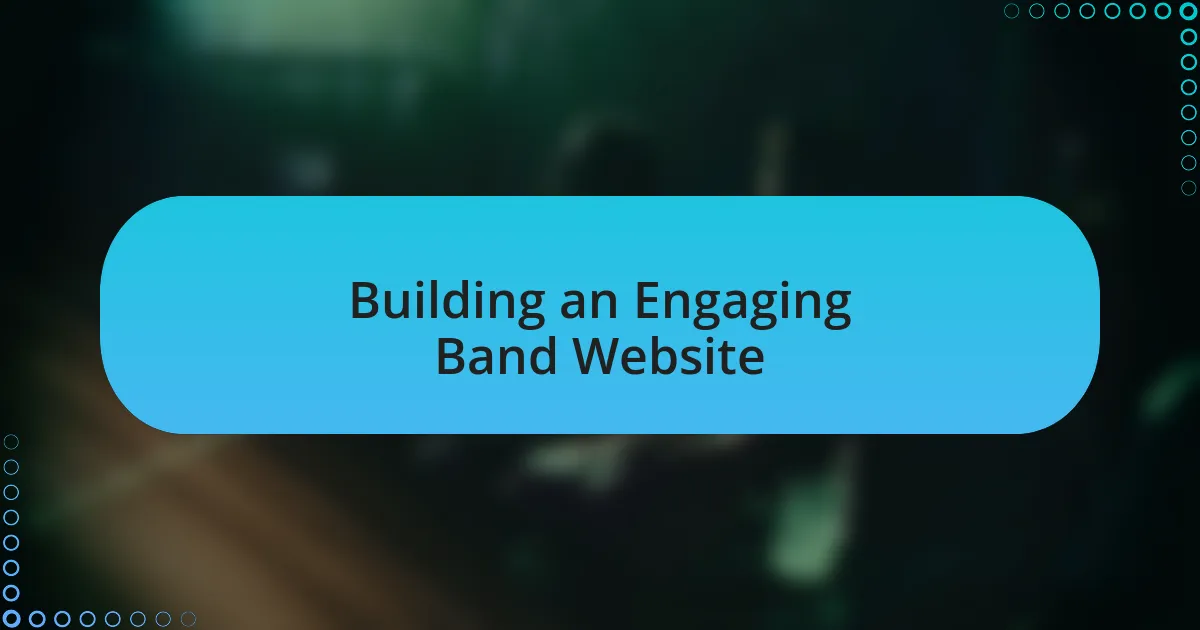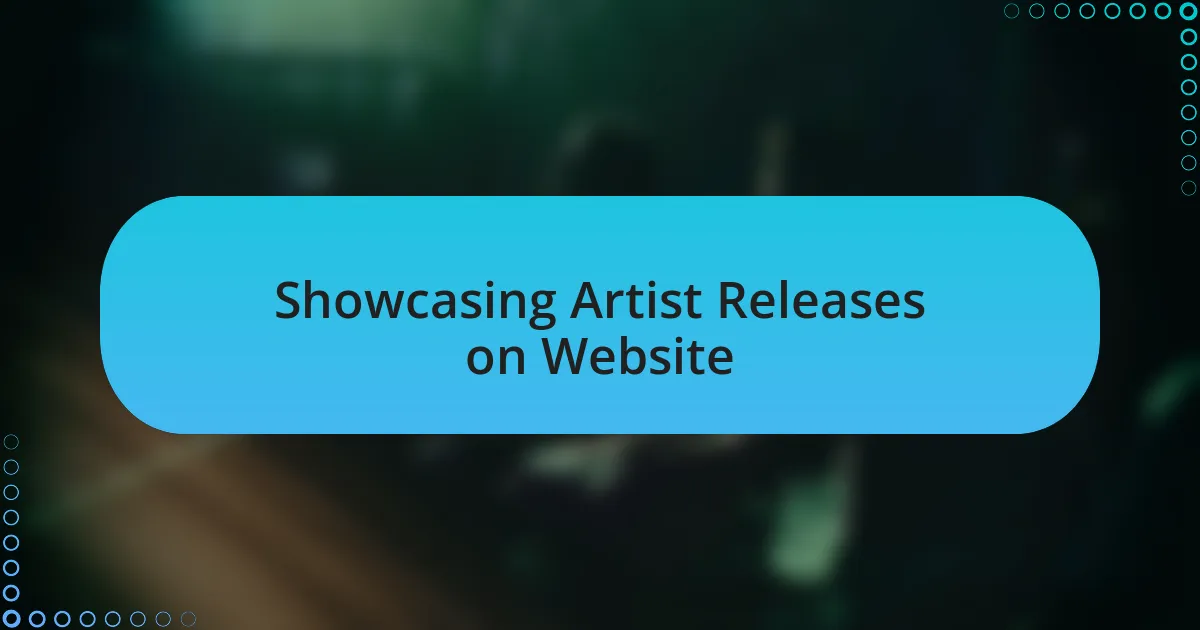Key takeaways:
- Local artist releases foster community connection and creativity, enriching the local narrative through personal storytelling.
- Supporting local musicians boosts the local economy and promotes diversity in the music scene, offering unique perspectives beyond mainstream circles.
- An engaging band website should prioritize user-friendly navigation and multimedia elements to enhance fan interaction and community building.
- Showcasing artist releases effectively involves dedicated sections, integrated audio players, and regular updates to maintain fan interest and involvement.

Understanding Local Artist Releases
When I think about local artist releases, I feel a sense of community and connection. It’s fascinating how these musicians often draw from their own experiences and surroundings, crafting songs that resonate deeply with their local audience. Have you ever listened to a track and felt like it was telling your own story? That’s the magic of local music.
Local artist releases provide a platform for talent that might otherwise go unnoticed. I remember attending a small gig where a local artist performed their first single. The raw emotion in the room was palpable, and it was amazing to witness how a simple song could bring people together, creating a unifying moment. How often do we get to be a part of something so intimate and authentic?
Moreover, the impact of supporting local artists extends beyond just music; it fosters a culture of creativity and innovation. I often find myself wondering, what happens when we uplift these voices? By promoting their releases, we not only help their dreams survive but also enrich our own lives through the diverse sounds and stories they share. Isn’t it incredible to think about the ripple effect that comes from championing local talent?

Importance of Supporting Local Artists
Supporting local artists is vital as it nurtures community identity and pride. I remember one evening at an open mic night, listening as a young songwriter shared their journey, filled with local landmarks and personal struggles. It was like peering into their life, and I couldn’t help but think: how does this connection enrich our community’s narrative? By investing in local music, we celebrate our shared stories and create a vibrant cultural tapestry.
Moreover, the financial boost that comes from supporting local talent circulates within the community. Attend a local show, and those ticket sales often help pay rent for local venues. I’ve seen firsthand how a humble gig can provide crucial support for an artist’s career while also benefiting local businesses. Isn’t it rewarding to know that our presence contributes to the sustainability of art in our neighborhoods?
Additionally, encouraging local musicians fosters diversity in the music scene. I often find that the sounds emerging from my area add layers to my musical taste that mainstream radio simply cannot offer. Every little venue I visit seems to be a treasure trove of undiscovered talent. Are we not missing out on beautiful, diverse perspectives when we overlook these local gems? Supporting local artists ensures that a wide range of voices and styles has a chance to be heard, enriching our experiences as listeners.

Building an Engaging Band Website
Building an engaging band website goes beyond just aesthetics; it’s about creating an interactive space that connects fans with the music. I remember when I first revamped my band’s site. I included a blog where I shared not just updates, but stories behind our songs and glimpses into our rehearsal space. This personal touch transformed how fans interacted with us; instead of being just passive listeners, they became part of our journey. Isn’t it incredible how storytelling can turn a simple website into a vibrant community hub?
Another critical element is ensuring the website is easy to navigate. When I set up my site, I prioritized clear menus and easy access to music, merch, and concert dates. One time, I received a message from a fan who had struggled to find our tour dates on a cluttered site. Her frustration reminded me that simplicity is key. Why should we make it hard for people to connect with our music? An intuitive design helps foster that connection and keeps fans coming back.
Lastly, I’ve found that incorporating multimedia elements—like videos and behind-the-scenes clips—can greatly enhance user engagement. I once shared a candid video of our band goofing around while recording a new track. That little peek into our dynamic sparked conversations online, inviting fans to share their thoughts and experiences. Have you ever watched a video that made you feel intimately connected to the artist? That’s the power of multimedia! It breaks down barriers and invites listeners into a shared experience with the music they love.

Showcasing Artist Releases on Website
When showcasing artist releases on the website, I’ve found it invaluable to create dedicated sections for new music or upcoming albums. I recall featuring a friend’s latest EP with a single-page layout that included snippets of each track and personal insights about the writing process. This not only made the release feel special, but also allowed fans to connect with the music on a deeper level—like unwrapping a gift together. Don’t you think that adds an element of excitement to their listening experience?
I’ve also learned the importance of integrating audio players directly on the site. One time, I embedded a player for an artist’s new single alongside an engaging story about its inspiration. Visitors could listen while reading, which created a sensory overlap that deepened their emotional response. Isn’t it wonderful how music can transform moments and share stories without uttering a word?
Additionally, actively updating the artist release section can spark ongoing interest and conversation. I remember when I highlighted one band’s progress by updating their page with live recordings from recent shows. This not only showcased their evolution but invited the fans to participate in the journey. How often do we want to see artists grow and change—sharing that evolution can feel like being part of an unfolding story.